3-Indolepropionic acid
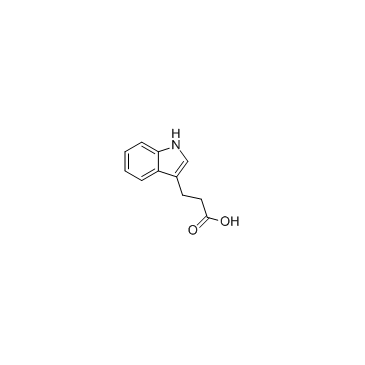
3-Indolepropionic acid structure
|
Common Name | 3-Indolepropionic acid | ||
|---|---|---|---|---|
| CAS Number | 830-96-6 | Molecular Weight | 189.210 | |
| Density | 1.3±0.1 g/cm3 | Boiling Point | 417.6±20.0 °C at 760 mmHg | |
| Molecular Formula | C11H11NO2 | Melting Point | 134-135 °C(lit.) | |
| MSDS | Chinese USA | Flash Point | 206.4±21.8 °C | |
Use of 3-Indolepropionic acid3-Indolepropionic acid is shown to be a powerful antioxidant and has potential in the treatment for Alzheimer’s disease. |
| Name | 3-(1H-indol-3-yl)propanoic acid |
|---|---|
| Synonym | More Synonyms |
| Description | 3-Indolepropionic acid is shown to be a powerful antioxidant and has potential in the treatment for Alzheimer’s disease. |
|---|---|
| Related Catalog | |
| Target |
Human Endogenous Metabolite |
| In Vitro | 3-Indolepropionic acid is shown to be a powerful antioxidant and has potential in the treatment for Alzheimer’s disease[1]. 3-Indolepropionic acid is a more potent scavenger of hydroxyl radicals than melatonin. Similar to melatonin but unlike other antioxidants, 3-Indolepropionic acid scavenges radicals without subsequently generating reactive and pro-oxidant intermediate compounds[2]. It is also suggested that indolepropionic acid, a gut microbiota-produced metabolite, is a potential biomarker for the development of type 2 diabetes (T2D) that may mediate its protective effect by preservation of β-cell function[3]. |
| References |
| Density | 1.3±0.1 g/cm3 |
|---|---|
| Boiling Point | 417.6±20.0 °C at 760 mmHg |
| Melting Point | 134-135 °C(lit.) |
| Molecular Formula | C11H11NO2 |
| Molecular Weight | 189.210 |
| Flash Point | 206.4±21.8 °C |
| Exact Mass | 189.078979 |
| PSA | 53.09000 |
| LogP | 1.76 |
| Vapour density | 2.1 (vs air) |
| Vapour Pressure | 0.0±1.0 mmHg at 25°C |
| Index of Refraction | 1.667 |
| InChIKey | GOLXRNDWAUTYKT-UHFFFAOYSA-N |
| SMILES | O=C(O)CCc1c[nH]c2ccccc12 |
| Storage condition | −20°C |
| Water Solubility | slightly soluble |
CHEMICAL IDENTIFICATION
HEALTH HAZARD DATAACUTE TOXICITY DATA
|
| Personal Protective Equipment | Eyeshields;Gloves;type N95 (US);type P1 (EN143) respirator filter |
|---|---|
| Hazard Codes | Xi:Irritant; |
| Risk Phrases | R22;R36/37/38 |
| Safety Phrases | S7-S16-S24/25-S26-S36/37-S37/39-S22 |
| RIDADR | UN 1987 3/PG 3 |
| WGK Germany | 3 |
| RTECS | NT8050000 |
| HS Code | 29339990 |
| Precursor 9 | |
|---|---|
| DownStream 10 | |
| HS Code | 2933990090 |
|---|---|
| Summary | 2933990090. heterocyclic compounds with nitrogen hetero-atom(s) only. VAT:17.0%. Tax rebate rate:13.0%. . MFN tariff:6.5%. General tariff:20.0% |
|
Metabolomics Approach Reveals Integrated Metabolic Network Associated with Serotonin Deficiency.
Sci. Rep. 5 , 11864, (2015) Serotonin is an important neurotransmitter that broadly participates in various biological processes. While serotonin deficiency has been associated with multiple pathological conditions such as depre... |
|
|
QSAR study on permeability of hydrophobic compounds with artificial membranes.
Bioorg. Med. Chem. 15 , 3756-67, (2007) We previously reported a classical quantitative structure-activity relationship (QSAR) equation for permeability coefficients (P(app-pampa)) by parallel artificial membrane permeation assay (PAMPA) of... |
|
|
Structural insight into the inhibition of human kynurenine aminotransferase I/glutamine transaminase K.
J. Med. Chem. 52 , 2786-93, (2009) Human kynurenine aminotransferase I (hKAT I) catalyzes the formation of kynurenic acid, a neuroactive compound. Here, we report three high-resolution crystal structures (1.50-1.55 A) of hKAT I that ar... |
| 3-Indolepropionic acid |
| MFCD00005660 |
| 1H-Indole-3-propanoic acid |
| 3-(1H-Indol-3-yl)propanoic acid |
| b-(3-Indolyl)propionic acid |
| Indole-3-propionic acid |
| EINECS 212-600-1 |
| 3-(1H-Indol-3-yl)propionic acid |
| IPA |
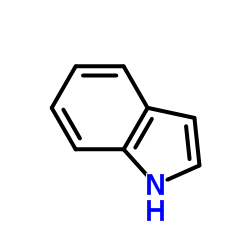 CAS#:120-72-9
CAS#:120-72-9 CAS#:79-10-7
CAS#:79-10-7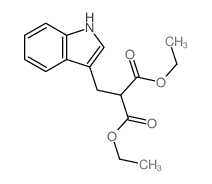 CAS#:10184-98-2
CAS#:10184-98-2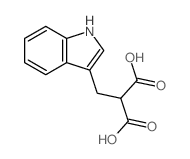 CAS#:4361-05-1
CAS#:4361-05-1![4,6,6-TRIMETHYL-6H-[1,3]THIAZIN-2-YLAMINE Structure](https://image.chemsrc.com/caspic/069/31529-28-9.png) CAS#:31529-28-9
CAS#:31529-28-9 CAS#:109897-76-9
CAS#:109897-76-9 CAS#:85612-35-7
CAS#:85612-35-7 CAS#:10075-50-0
CAS#:10075-50-0 CAS#:5457-31-8
CAS#:5457-31-8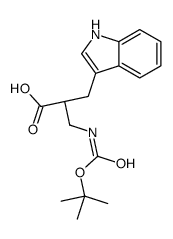 CAS#:1050443-69-0
CAS#:1050443-69-0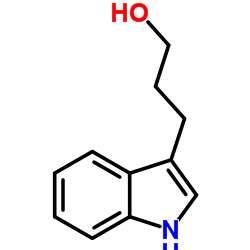 CAS#:3569-21-9
CAS#:3569-21-9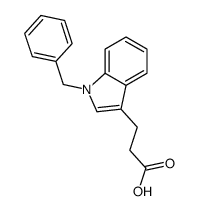 CAS#:141071-79-6
CAS#:141071-79-6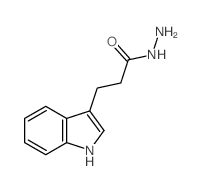 CAS#:20401-90-5
CAS#:20401-90-5![3-[1-[(4-fluorophenyl)methyl]indol-3-yl]propanoic acid structure](https://image.chemsrc.com/caspic/253/219544-69-1.png) CAS#:219544-69-1
CAS#:219544-69-1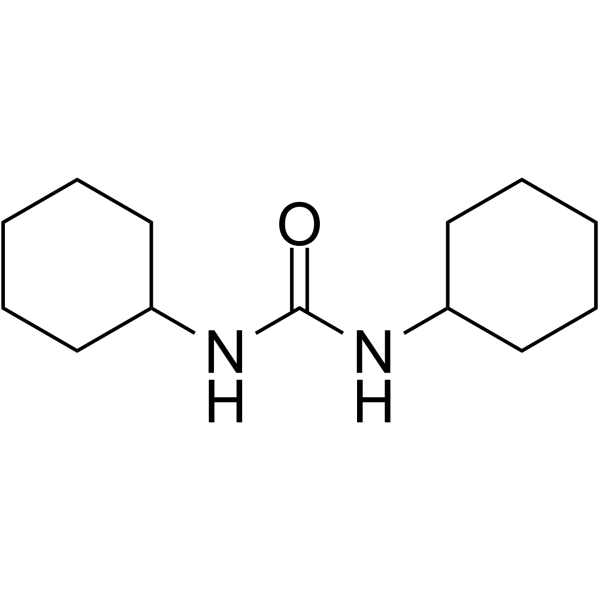 CAS#:2387-23-7
CAS#:2387-23-7![1-{[3-(1H-Indol-3-yl)propanoyl]oxy}-2,5-pyrrolidinedione structure](https://image.chemsrc.com/caspic/089/60586-98-3.png) CAS#:60586-98-3
CAS#:60586-98-3 CAS#:3456-99-3
CAS#:3456-99-3 CAS#:6245-89-2
CAS#:6245-89-2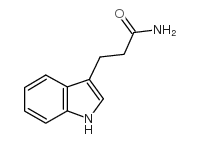 CAS#:5814-93-7
CAS#:5814-93-7
